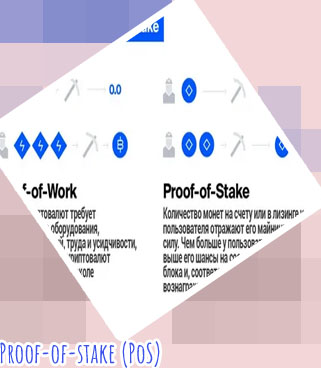Ethereum proof of stake
In the world of cryptocurrency, Ethereum proof of stake is a hot topic that many investors and enthusiasts are eager to learn more about. To shed light on this subject, we have curated a list of three informative articles that delve into the intricacies of Ethereum's transition to proof of stake. These articles will provide valuable insights and analysis to help readers better understand the implications of this significant change in the Ethereum network.
Demystifying Ethereum's Proof of Stake: A Comprehensive Guide

Ethereum's transition from Proof of Work to Proof of Stake has been a highly anticipated and debated topic within the cryptocurrency community. This shift marks a significant change in how transactions are validated on the Ethereum network, promising greater scalability, security, and energy efficiency.
The comprehensive guide on Ethereum's Proof of Stake provides a clear and detailed explanation of how this new consensus mechanism works. It breaks down complex concepts such as staking, validators, and slashing, making it accessible even to those new to the world of blockchain technology. The guide also highlights the benefits of Proof of Stake, such as reduced energy consumption and increased network security.
One practical use case of Ethereum's Proof of Stake is within decentralized finance (DeFi) applications. By staking their Ethereum tokens, users can participate in governance decisions and earn rewards in the form of additional tokens. This not only incentivizes users to hold onto their tokens but also helps secure the network by encouraging active participation.
Overall, the guide serves as an invaluable resource for anyone looking to understand the intricacies of Ethereum's Proof of Stake consensus mechanism. Whether you're a seasoned blockchain enthusiast or a newcomer to the space, this guide provides a comprehensive overview of one of the most significant developments in the world of cryptocurrency.
The Benefits and Challenges of Ethereum's Transition to Proof of Stake
Ethereum's transition to Proof of Stake is a significant milestone for the cryptocurrency community. Proof of Stake is a consensus mechanism that aims to address some of the limitations of the current Proof of Work system. While there are several benefits to this transition, there are also some challenges that need to be overcome.
One of the key benefits of Ethereum's transition to Proof of Stake is that it will reduce the energy consumption associated with mining. Unlike Proof of Work, which requires miners to solve complex mathematical puzzles to validate transactions, Proof of Stake allows validators to create new blocks based on the number of coins they hold. This means that the network will be more energy-efficient, which is an important consideration given the growing concerns around the environmental impact of cryptocurrency mining.
Another benefit of Proof of Stake is that it promotes decentralization. In a Proof of Work system, miners with more computational power have a higher chance of validating transactions and earning rewards. This can lead to centralization, with a few large mining pools controlling the network. In contrast, Proof of Stake gives every validator an equal chance of being chosen to create a new block, which helps to distribute power more evenly across the network.
However, the transition to Proof of Stake also presents some challenges. One of the main challenges is ensuring the security
Understanding Ethereum's Proof of Stake Mechanism: How It Differs from Proof of Work
Ethereum's shift from Proof of Work to Proof of Stake has been a hot topic in the world of cryptocurrency. This change is set to revolutionize the way transactions are verified and blocks are added to the blockchain. But what exactly is Proof of Stake, and how does it differ from Proof of Work?
Proof of Stake is a consensus algorithm that relies on validators to create new blocks on the blockchain. These validators are chosen based on the number of coins they hold, rather than their computing power like in Proof of Work. This means that participants in the network are incentivized to act honestly to maintain the value of their stake.
One key difference between Proof of Stake and Proof of Work is the environmental impact. Proof of Work requires vast amounts of electricity to solve complex mathematical puzzles, leading to concerns about energy consumption. On the other hand, Proof of Stake is much more energy-efficient, as validators are chosen based on their stake in the network rather than their computational power.
Understanding Ethereum's move to Proof of Stake is crucial for anyone interested in the future of blockchain technology. This shift has the potential to make Ethereum more secure, scalable, and sustainable in the long run. By grasping the differences between Proof of Stake and Proof of Work, investors and developers can better navigate the evolving
